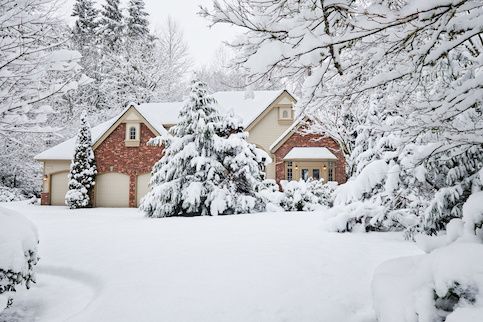A conventional loan is the most common mortgage for buying a home. Conventional loans are provided by private lenders and can be conforming or non-conforming. A conventional loan may be your best option if you have good credit and a low debt-to-income ratio. Here’s a closer look at what you need to know about conventional loans.
Key Takeaways:
- Conventional loans are the most popular mortgage type in the U.S. They are offered by private lenders without the backing of any government agency.
- Conforming conventional loans adhere to loan limits and set specific requirements for borrowers. Lenders are free to set any terms they wish for non-conforming loans.
- Conventional loans are often cheaper than FHA loans but have stricter eligibility requirements.
What Is A Conventional Loan?
A conventional mortgage is a loan from a private lender and is not insured by the U.S. government. There are two types of conventional loans: conforming and non-conforming.
A conforming loan meets requirements for the loan amount, minimum down payment, and borrower’s credit score and debt-to-income ratio set by the Federal Housing and Finance Agency.
Lenders can sell conforming loans to Fannie Mae and Freddie Mac, which are government-sponsored enterprises. Lenders use the proceeds from selling the loans to Fannie and Freddie to reduce their risk and offer more loans to more home buyers. Fannie and Freddie package loans they buy into mortgage-backed securities, which are sold and traded on secondary investment markets.
Non-conforming loans don’t meet FHFA requirements and cannot be sold to Fannie or Freddie. The most common type of non-conforming loan is the jumbo loan, which exceeds the maximum loan amount for a conforming mortgage.
Nonconventional loans include government-backed mortgages such as:
What’s Your Goal?
Buy A Home
Discover mortgage options that fit your unique financial needs.

Refinance
Refinance your mortgage to have more money for what matters.
Tap Into Equity
Use your home’s equity and unlock cash to achieve your goals.
How Conforming Conventional Loans Work
How does a conventional loan work? It depends on whether it’s conforming or non-conforming.
Conforming loans meet standards set by the FHFA, including a maximum loan amount and a minimum down payment. Borrowers also must meet standards for a minimum credit score and maximum DTI ratio.
Borrowers usually can choose a fixed or adjustable interest rate and a 15- or 30-year term.
When considering buying a home or refinancing with a conventional loan, make sure you meet the following criteria.
Loan Limits
The FHFA sets a maximum conforming loan limit annually. The limits vary depending on how many units are included in the home you’re buying and whether it’s located in a designated high-cost area.
The FHFA posts an online tool for finding out where the high-cost limit applies.
2025 Conforming Loan Limits
| Number Of Units | Baseline Loan Limits | High-Cost Area Loan Limit |
|---|---|---|
| 1 | $806,500 | $1,209,750 |
| 2 | $1,032,650 | $1,548,975 |
| 3 | $1,248,150 | $1,872,225 |
| 4 | $1,551,250 | $2,326,875 |
Minimum Down Payment
One of the biggest questions home buyers ask is how much do you have to put down on a conventional loan? You need to make a down payment of at least 3% of the purchase price to get a conforming loan for a single-family home. If you’re not a first-time home buyer or choosing an ARM, you’ll need a 5% down payment. If you’re buying a home with two to four units, you’ll need 15%.
Private Mortgage Insurance
If you make a conventional loan down payment of less than 20%, you need to pay for private mortgage insurance. PMI protects the lender from losses if you default on your mortgage. You’ll have to pay for PMI until you have 20% equity in your home. You can do this by paying down your loan balance or increasing your home’s value.
Minimum Credit Score
Conforming loans require borrowers to have a credit score of at least 620. Lenders sometimes will have a higher minimum.
Your credit score tells lenders how well you manage your debt and can indicate that you’ll make your mortgage payments. The benefit of a higher credit score is that you may get better terms, like a lower interest rate. To help improve your credit score, pay your bills on time and pay down your debt.
Maximum DTI Ratio
Your DTI ratio shows how much of your monthly income is required to pay your debts. It’s calculated to include the projected monthly payment for the mortgage you’re applying for and can’t exceed 50%. Some lenders may set a lower maximum. A DTI ratio calculator can show how your finances pencil out. If you need to reduce your DTI ratio, work on paying down your debts, increasing your income, or a combination of both.
Fixed or Adjustable Interest Rates
Conforming loan borrowers can choose a fixed or adjustable interest rate. With a fixed-rate mortgage, your interest rate never changes. With an ARM, your interest rate is locked for a specific introductory period, typically between three and 10 years. Once that period is up, your interest rate will change, usually once a year, and may increase. The introductory interest rate on an ARM is generally lower than on a fixed-rate loan, which means you’ll save more money during that period, but it may increase after that.
Loan Term
Your loan term is how long you have to repay the loan. The most common loan terms are 15 or 30 years, though some lenders offer custom terms. Loans with a shorter loan term will have a higher monthly payment, but you repay them sooner and pay less total interest. Loans with a longer loan term have a more affordable monthly payment, but you’ll pay more interest.
Closing Costs
Closing costs refer to the fees you must pay to get a mortgage and transfer legal ownership of the home. This includes the home inspection, appraisal, lender origination fees, underwriting, recording fees, title search and title insurance. Expect closing costs on a conforming loan to total 2% to 5% of the purchase price. So, if you’re buying a $400,000 home, you can expect your closing costs to range from $8,000 to $20,000.
How Non-Conforming Conventional Loans Work
Non-conforming conventional loans do not meet the requirements set by Fannie Mae and Freddie Mac. Lenders can set their own requirements for non-conforming loans, so expect them to vary.
Jumbo Loans
Jumbo loans exceed the conforming loan limits and are used to buy more expensive homes. Lenders take all the risk in making a jumbo loan because they can’t sell it to Fannie or Freddie, so most require borrowers to make a down payment of at least 10% to 20%. They also need a higher credit score and lower DTI ratio, as well as financial reserves. Lenders may charge higher interest rates on jumbo loans.
Portfolio Loans
Portfolio loans are mortgages the lender keeps on its books and doesn’t sell on a secondary market. Portfolio loans can be easier to qualify for than conforming loans, and they don’t have limits. However, portfolio loans can also come with higher interest rates and fees.
Subprime Loans
A subprime mortgage is a loan offered to borrowers with poor credit. These mortgages come with a higher interest rate to compensate the lender for the risk posed by a borrower with subprime credit. Subprime loans often have adjustable rates that start low and rise over time. The appeal of a low monthly payment at the beginning of the loan term can become unaffordable later.
Ready To Become A Homeowner?
Get matched with a lender that can help you find the right mortgage.
Conventional Loans Vs. FHA Loans
Issued by private lenders and insured by the government, FHA loans are available to borrowers with a credit score as low as 500 with a 10% down payment or borrowers with a 580 minimum credit score and a down payment of at least 3.5%. Comparing FHA vs. conventional loans shows that while the latter are easier to get, borrowers with good credit will pay less with a conventional conforming loan.
Take The First Step To Buying A Home
Find a lender that will work with your unique financial situation.
Conventional Loans Vs. VA Loans
VA loans are available only to military service members, veterans and their eligible surviving spouses. There’s no loan limit and no down payment, which is a significant difference between VA loans and conventional loans. There’s no mortgage insurance fee, but borrowers must pay a funding fee at closing. VA loans offer veterans easy access to a mortgage, but a conventional loan may be cheaper for borrowers with good credit and a down payment.
Conventional Loans Vs. USDA Loans
USDA loans are available only to low- and moderate-income borrowers buying homes in specific rural areas. USDA loans require no down payment, making them a good option for borrowers without much savings. USDA loans tend to be less expensive than FHA loans but require borrowers to pay an upfront fee and ongoing mortgage insurance.
Pros And Cons Of Conventional Loans
Let’s look at some of the advantages and drawbacks of conventional loans.
Pros And Cons Of Conventional Loans
| Pros | Cons |
|---|---|
| Most common loan type. | Stricter eligibility requirements. |
| Low down payment. | 3% minimum down payment. |
| Typically, costs less than FHA loan if you have good credit. | Minimum credit score of 620. |
| Flexible terms and competitive rates. | Minimum credit score of 620. |
| No mortgage insurance if your down payment is at least 20%. | Stricter DTI requirements. |
Who Should Get A Conventional Loan?
A conventional loan can be a good fit for borrowers with a credit score of at least 620 and enough saved up to afford a down payment of at least 3% of the purchase price. If you can afford a down payment of at least 20%, you can save more money by avoiding PMI. If you don’t meet conventional loan requirements, other loan types may help you buy a home.
How To Apply For A Conventional Loan
Before shopping for a home, consider getting a mortgage prequalification to roughly estimate how much you can afford to borrow. As you prepare to look at homes, getting mortgage preapproval will help you more accurately set your budget.
Once you’ve made an offer the seller has accepted, it’s time to officially apply for a mortgage.
Your lender will ask you to complete an application and provide documents verifying your finances. Expect your lender to ask for:
- Proof of income with paystubs covering the last 30 days and W-2s or tax returns from the past one to two years.
- Documentation for any passive income you receive.
- Proof of assets with bank or investment statements.
- Proof of liabilities.
- Employment contact information.
- Proof of homeowners insurance.
Three days after receiving your application, your lender will provide a loan estimate document detailing the loan it expects you to qualify for. While you’re having the home inspected, your lender will underwrite the application and verify your finances. Your lender may ask you for additional documents.
Three days before closing, you’ll receive a closing disclosure with all the final details of your loan and closing costs. At closing, you’ll sign the documents to fund your loan, pay your closing costs and down payment, and take legal ownership of the home.
FAQ
Here are answers to common questions about conventional loans.
The Bottom Line
Whether a conventional loan is a good fit depends on your qualifying factors and financial goals. Conventional loans have many options, including conforming and nonconforming loans. Typically, borrowers can get more competitive interest rates and terms on conventional loans versus other options, though it will depend on your financial situation, loan type and lender.
More From Quicken Loans:
Sam Hawrylack contributed to the reporting of this article.

Rory Arnold
Rory Arnold is a Los Angeles-based writer who has contributed to a variety of publications, including Quicken Loans, LowerMyBills, Ranker, Earth.com and JerseyDigs. He has also been quoted in The Atlantic. Rory received his Bachelor of Science in Media, Culture and Communication from New York University. He also completed the SoFi/Coursera Fundamentals of Personal Finance Specialization consisting of five courses: Introduction to Personal Finance, Saving Money for the Future, Managing Debt, Fundamentals of Investing, and Risk Management in Personal Finance.












